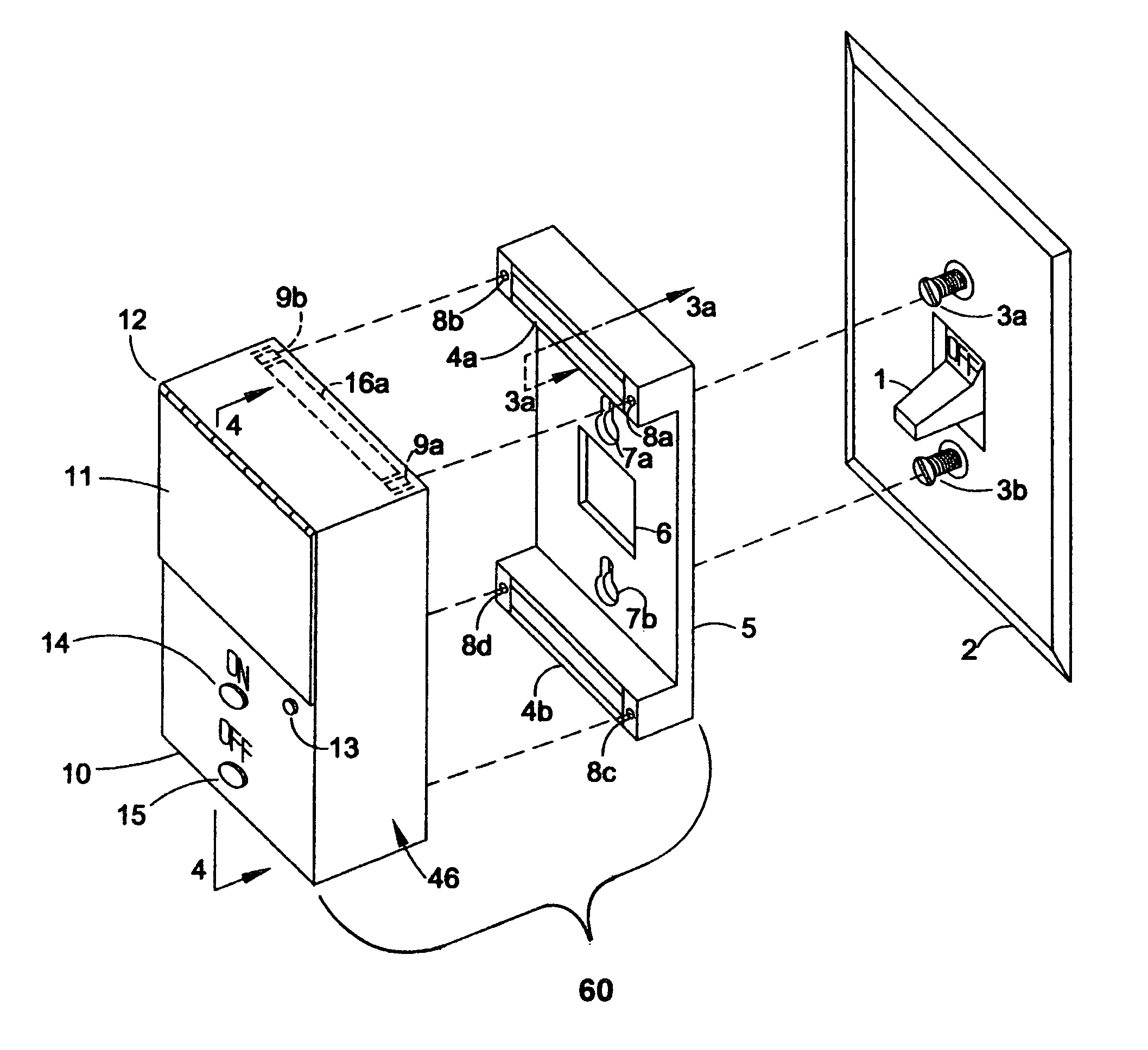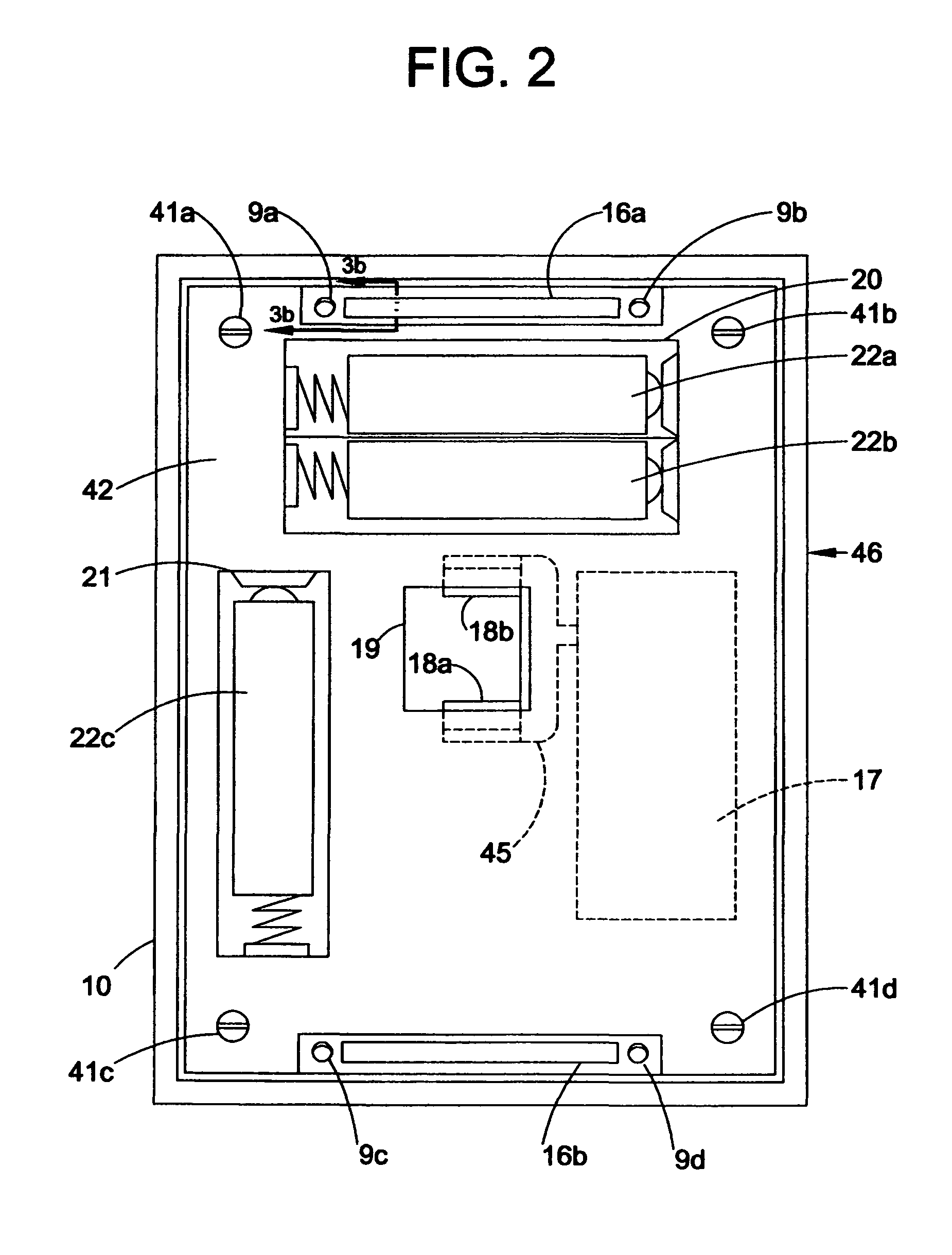Programmable wall switch controller
a technology of programmable switch levers and controllers, which is applied in the direction of switch power arrangements, tumbler/rocker switch details, and sustainable buildings, etc., can solve the problems of increasing the normal operating power consumption of geared dc motors, and achieves accurate and correct alignment, easy installation and convenient use
- Summary
- Abstract
- Description
- Claims
- Application Information
AI Technical Summary
Benefits of technology
Problems solved by technology
Method used
Image
Examples
third embodiment
FIG. 7 shows a third preferred embodiment of the present invention mounted to a standard switch cover plate cover plate 2. The main housing unit 49 of the third embodiment is comprised of the same back cover 42 in the previous two embodiments and a front cover 50 which is designed to accept a display screen and pushbutton panel module 51. In this embodiment, a standardized display screen and pushbutton panel module 51 is used to display time information and to enter the information into the microprocessor 35 (shown in FIG. 8). The display screen 52 is a standard, segmented, four-digit, 12-hour clock display with a PM indicator light 54. The display screen 52 can be a conventional low power display such as an LCD or OLED type of display. The pushbutton panel 53 has five keys. The PT key 53b, the ON T key 53c, the OFF T key 53d, and the CL key 53e, are used for the same functions as the P-T pushbutton switch 27, the ON-T pushbutton switch 28, the OFF-T pushbutton switch 29, and the CL...
second embodiment
FIG. 8 is also representative of the block diagram of the microprocessor 35 and its electrical interfaces for the For this embodiment, there is no On pushbutton switch 14 and no Off pushbutton switch 15 and the microprocessor 35 does not have the corresponding electrical interfaces to these switches.
FIG. 8 is also representative of the block diagram of the microprocessor 35 and its electrical interfaces for the third embodiment. For this embodiment, the rotary switch 26 electrical interfaces will be replaced by electrical interfaces from the display screen and pushbutton panel module 51.
PUM
 Login to View More
Login to View More Abstract
Description
Claims
Application Information
 Login to View More
Login to View More - R&D
- Intellectual Property
- Life Sciences
- Materials
- Tech Scout
- Unparalleled Data Quality
- Higher Quality Content
- 60% Fewer Hallucinations
Browse by: Latest US Patents, China's latest patents, Technical Efficacy Thesaurus, Application Domain, Technology Topic, Popular Technical Reports.
© 2025 PatSnap. All rights reserved.Legal|Privacy policy|Modern Slavery Act Transparency Statement|Sitemap|About US| Contact US: help@patsnap.com



